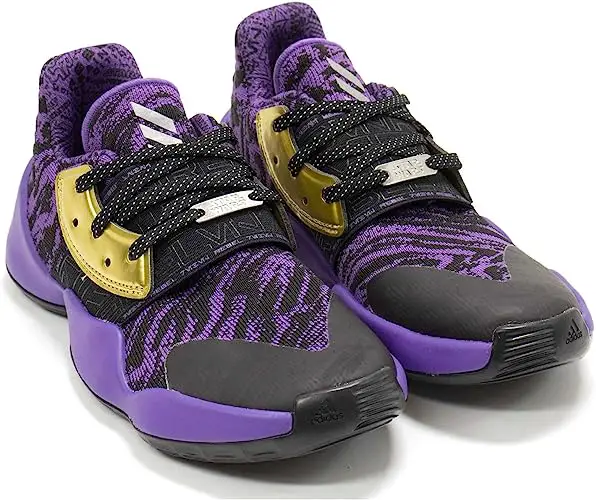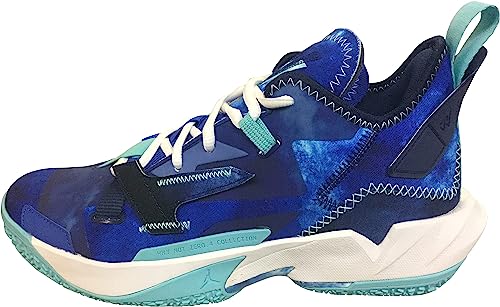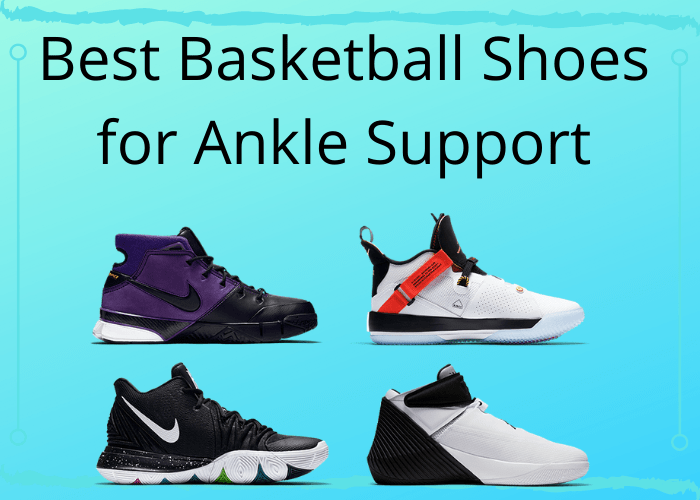basketball is a physically demanding sport that requires players to be agile, quick, and explosive. As a result, it is essential for basketball players to have a pair of sneakers that can support their feet, particularly their ankles. Ankle injuries are common in basketball, and a good pair of sneakers can help prevent them. In this article, we’ll discuss the best basketball sneakers for ankle support, including their pros and cons.
1. Nike LeBron Soldier 14

The Nike LeBron Soldier 14 is a high-top basketball sneaker designed for maximum ankle support. Its lockdown strap system provides a secure fit, while the Zoom Air unit in the heel delivers responsive cushioning. The LeBron Soldier 14 is a popular choice among basketball players due to its durable construction and excellent ankle support.
Pros:
-High-top design provides maximum ankle support
-Lockdown strap system provides a secure fit
-Zoom Air unit in the heel provides responsive cushioning
Cons:
-Expensive
-May not fit all foot shapes comfortably
Read Also-Best High Top Shoes for Ankle Support in 2023
2. Adidas Harden Vol. 4

The adidas Harden Vol. 4 is a low-top basketball sneaker that offers excellent ankle support, thanks to its supportive midfoot cage and TPU heel counter. Its cushioned midsole provides comfort, while its rubber outsole offers excellent traction.
Pros:
-Supportive midfoot cage and TPU heel counter provide excellent ankle support
-Cushioned midsole provides comfort
-Rubber outsole offers excellent traction
Cons:
-Low-top design may not provide as much ankle support as high-top sneakers
-Sizing may be off for some wearers
Read More-The Safest Time Measurement: How Long To Wear Calf Compression Sleeve
3. Under Armour Curry 7

The Under Armour Curry 7 is a mid-top basketball sneaker designed for players looking for a balance between ankle support and mobility. Its mid-top design provides ankle support, while its lightweight construction and low-to-the-ground design allow for quick and agile movements on the court.
Pros:
-Mid-top design provides ankle support
-Lightweight construction allows for quick and agile movements
-Low-to-the-ground design improves court feel
Cons:
-Mid-top design may not provide as much ankle support as high-top sneakers
-Not as durable as some other options on the market
Read-Benefits of compression socks for running in 2023
4. Jordan Why Not Zer0.4

The Jordan Why Not Zer0.4 is a high-top basketball sneaker designed for players looking for maximum ankle support. Its high-top design, combined with a supportive midfoot cage, provide excellent stability and support. The Zoom Air unit in the heel delivers cushioning, while the rubber outsole provides traction.
Pros:
-High-top design and supportive midfoot cage provide excellent stability and support
-Zoom Air unit in the heel provides cushioning
-Rubber outsole provides traction
Cons:
-Expensive
-Not as durable as some other options on the market
FAQ for Best Basketball Sneakers for Ankle Support
1. What sneakers are best for ankle support?
When it comes to sneakers with good ankle support, there are several options available on the market. Here are a few popular choices:
- High-Top Basketball Shoes: Basketball shoes are known for their excellent ankle support due to their high-top design. They provide stability and help prevent ankle rolls. Brands like Nike, Adidas, and Under Armour offer a wide range of basketball shoes with varying levels of ankle support.
- Hiking Boots: If you’re looking for ankle support in outdoor activities, hiking boots are a great choice. They provide sturdy ankle support, protecting your ankles from twists and sprains during uneven terrain hikes. Popular brands include Merrell, Salomon, and Columbia.
- Stability Running Shoes: Stability running shoes are designed to provide support for individuals with pronation issues, where the foot tends to roll inward excessively. These shoes often have firmer materials on the inner side and supportive structures to reduce excessive movement and promote proper alignment. Brands like Brooks, Asics, and New Balance offer stability running shoes.
- Cross Training Shoes: Cross training shoes are versatile and offer decent ankle support for a range of activities. They are designed to provide stability during multidirectional movements, making them suitable for various workouts, including weightlifting, aerobics, and circuit training. Reebok, Nike, and New Balance are popular brands for cross training shoes.
- Ankle Braces and Supports: In addition to choosing the right shoes, you might consider using ankle braces or supports. These can be worn with any type of shoe and provide extra reinforcement to the ankle joint, reducing the risk of injuries.
It’s important to note that the best sneakers for ankle support may vary depending on your specific needs, foot structure, and any existing ankle conditions. If you have chronic ankle problems or specific concerns, it’s advisable to consult with a healthcare professional or a podiatrist for personalized recommendations.
2. Are basketball shoes good for ankles?
Basketball shoes are designed specifically to provide support and stability to the feet and ankles during the high-impact movements involved in basketball. They typically have features that can help protect the ankles, such as high-top designs and sturdy materials.
Here are some ways in which basketball shoes can be beneficial for ankles:
- Ankle Support: Most basketball shoes have high-top designs that extend above the ankle, providing extra support and stability to the joint. This can help prevent excessive ankle rolls or sprains by restricting the range of motion and offering additional protection.
- Cushioning: Basketball shoes often incorporate advanced cushioning technologies, such as air or gel units, to absorb shock and reduce the impact on the feet and ankles. This can be particularly helpful during jumping, landing, and sudden direction changes, which are common in basketball.
- Traction: Basketball shoes typically feature outsoles with specialized patterns and materials that offer excellent traction on the court. Good traction helps prevent slipping and sliding, reducing the likelihood of ankle injuries caused by losing balance or sudden stops.
- Durability: Basketball shoes are constructed with durable materials, including reinforced toe caps and sturdy uppers, to withstand the rigorous demands of the sport. The added durability can provide extra support and stability to the ankles during gameplay.
While basketball shoes are designed with ankle support in mind, it’s important to note that they are not a foolproof solution for preventing ankle injuries. Ankle injuries can still occur even when wearing basketball shoes, particularly if a player lands awkwardly, makes sudden movements, or experiences collisions with other players.
To further minimize the risk of ankle injuries, players should also consider other preventive measures such as proper warm-up exercises, strengthening exercises for the lower body, and maintaining good overall physical fitness. Additionally, players with a history of ankle issues may benefit from additional ankle braces or supports in conjunction with basketball shoes for added stability.
Ultimately, while basketball shoes can provide some level of ankle support and protection, it’s crucial to practice good technique, exercise caution, and prioritize overall ankle health to minimize the risk of injuries.
3.Should I wear ankle support for basketball?
The decision to wear ankle support, such as ankle braces or wraps, during basketball ultimately depends on your individual circumstances and needs. Here are some factors to consider when deciding whether to wear ankle support:
- Injury History: If you have a history of ankle sprains or other ankle injuries, wearing ankle support can be beneficial. Ankle braces or wraps provide additional stability and can help prevent the recurrence of previous injuries.
- Ankle Weakness: If you have weak ankles or feel unstable during basketball activities, ankle support can provide extra support and increase your confidence on the court. It can help reduce the risk of rolling or twisting your ankle.
- Prevention: Even if you haven’t experienced ankle injuries in the past, wearing ankle support can be a proactive measure to minimize the risk of potential injuries. It can provide added protection and stability, especially during high-impact movements and sudden changes in direction.
- Comfort and Mobility: Some individuals find ankle support restrictive or uncomfortable, which can affect their performance and range of motion. If ankle support hinders your movement or causes discomfort, you might prefer not to wear it.
- Professional Advice: If you have specific concerns about your ankles or need guidance on whether to wear ankle support, it’s advisable to consult with a sports medicine professional or healthcare provider. They can evaluate your individual needs, assess your ankle health, and provide personalized recommendations.
It’s worth noting that ankle support should not be solely relied upon as a substitute for proper technique, conditioning, and strengthening exercises. While ankle support can provide additional stability, it’s important to focus on building ankle strength, balance, and flexibility through appropriate exercises and training.
Ultimately, the decision to wear ankle support for basketball is a personal one, based on your individual circumstances and preferences. Consider factors such as your injury history, ankle stability, and comfort level, and consult with a healthcare professional for personalized advice if needed.
4.What is best to support a weak ankle?
When looking to support a weak ankle, there are several options to consider. Here are some common methods and devices that can help provide stability and support:
- Ankle Braces: Ankle braces are specially designed devices that wrap around the ankle to provide external support. They typically have adjustable straps or laces to customize the level of compression and stability. Ankle braces can help restrict excessive movement, prevent rolling or twisting of the ankle, and provide added support during physical activities.
- Ankle Sleeves: Ankle sleeves are compression garments that provide a snug fit around the ankle joint. They offer mild support, compression, and warmth to the ankle, promoting stability and reducing swelling. While ankle sleeves may not provide as much support as braces, they can be a more comfortable option for individuals with mild ankle instability.
- Lace-Up Braces: Lace-up braces are similar to ankle braces but feature a lace-up design that allows for more customizable support and compression. They are typically made of a combination of fabric and straps that can be tightened to provide a secure fit and stability to the ankle.
- Ankle Taping: Ankle taping involves using adhesive tape to wrap and support the ankle joint. It can provide stability, restrict excessive movement, and reduce the risk of injury. Ankle taping is often used in sports settings and can be applied by a trained professional or learned through proper technique.
- Ankle Exercises and Physical Therapy: Strengthening the muscles surrounding the ankle through specific exercises can help improve ankle stability and reduce the risk of injury. Working with a physical therapist or sports medicine professional can be beneficial in developing an individualized exercise program to address your weak ankle.
It’s important to note that while these methods can provide support for weak ankles, they are not meant to replace proper rehabilitation, conditioning, and strengthening exercises. Building strength, flexibility, and balance in the ankle through targeted exercises is crucial for long-term stability and injury prevention.
If you have persistent ankle instability or a history of recurring ankle injuries, it’s advisable to consult with a healthcare professional, such as a sports medicine specialist or physical therapist. They can assess your specific situation, provide guidance on the best course of action, and recommend the most appropriate methods for supporting and strengthening your weak ankle.
Regenerate response
5.What are ankle support shoes?
Ankle support shoes, also known as high-top shoes, are footwear designed to provide additional support and stability to the ankles. These shoes typically have a higher collar that extends above the ankle joint, providing a snug fit and extra coverage. The increased height of the shoe aims to limit excessive ankle movement, prevent rolling or twisting, and reduce the risk of ankle injuries, particularly during sports or activities that involve lateral movements or jumping.
Ankle support shoes are commonly used in sports like basketball, where players frequently make quick cuts, jumps, and changes in direction. However, they can also be beneficial for individuals with weak ankles or those looking for added stability and support in their everyday activities.
Here are some key features of ankle support shoes:
- High-Top Design: Ankle support shoes have a higher collar that extends above the ankle. This design offers stability and restricts excessive ankle movement.
- Cushioning and Impact Protection: These shoes often incorporate advanced cushioning technologies in the midsole to absorb shock and provide comfort during high-impact activities. The cushioning helps reduce the strain on the ankles and provides additional support.
- Sturdy Construction: Ankle support shoes are typically constructed with durable materials, including reinforced uppers and toe caps, to withstand the demands of athletic activities and offer better support to the ankle.
- Traction: These shoes often feature outsoles with specialized patterns and materials that provide excellent grip and traction on various surfaces. Good traction helps prevent slipping and sliding, reducing the risk of ankle injuries caused by losing balance.
While ankle support shoes can provide some level of stability and protection to the ankles, it’s important to note that they are not foolproof in preventing ankle injuries. Proper technique, conditioning, and strengthening exercises are essential for maintaining overall ankle health and reducing the risk of injuries.
If you have specific concerns about your ankle stability or need personalized advice, it’s recommended to consult with a healthcare professional, such as a sports medicine specialist or podiatrist. They can evaluate your individual needs and provide recommendations on the most suitable footwear or additional measures to support your ankles.
In conclusion,
finding the right pair of basketball sneakers for ankle support is crucial for preventing injury on the court. When shopping for a pair of sneakers, consider factors such as the sneaker’s design, cushioning, traction, and overall fit. The Nike LeBron Soldier 14, adidas Harden Vol. 4, Under Armour Curry 7, and Jordan Why Not Zer0.4 are all excellent options for players looking for sneakers with excellent ankle support. Consider their pros and cons and choose the pair that is best suited to your specific needs and playing style



